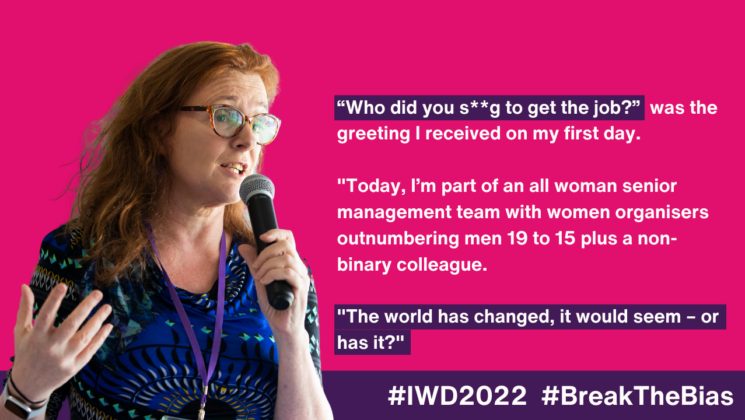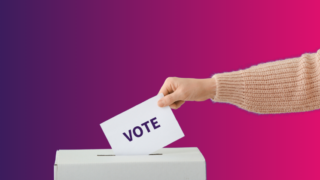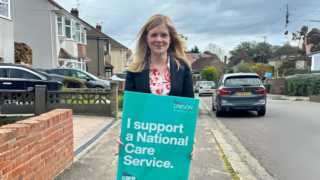When I first became a union official, at least once a week, I would go to a meeting with members or employers and introduce myself as the area officer (as we were called then) and be told “You don’t look like an area officer.” I assumed that there was a certain way that trade union officials were supposed to look and a 24 year old woman wasn’t it. There were worse comments – “who did you s**g to get the job?” was the greeting I received on my first day, and being the sole woman in an organiser team of white men of a certain age could be bruising, intimidating and just plain lonely.
Today, I’m part of an all woman senior management team with women organisers outnumbering men 19 to 15 plus a non-binary colleague. The world has changed, it would seem – or has it? I worry sometimes that in the labour movement we still have a glorified image of what a leader looks like – usually a white male of advanced years. Whether it’s the Bob Crow version – vocal, unyielding and unapologetically proletarian; or the sharp suited and well-spoken version epitomised by Tony Blair and Keir Starmer, somehow women miss out. Time and time again, I hear people say they vote for policies not people – but I’ve never heard a convincing explanation as to why Labour Party members didn’t vote for Diane Abbott but flocked to vote for Jeremy Corbyn. Why did a Black woman, with the same politics and the same voting record not meet the approval of members who voted for just those same politics five years later? Did she not look like a Labour Party Leader?
Enough of the Labour Party, this is about UNISON. Last year the union voted for its first female general secretary, Christina McAnea – a milestone for us and a long overdue one. Perhaps seeing Christina in this role, leader of the largest union in the UK, will improve our collective sense of what a trade union leader looks like.
The theme of this year’s International Women’s Day is ‘Break the Bias’ and for me that means examining the biases we all have, whether we like it or not, whether we know it or not. When we look at candidates in elections or for jobs, do we already have a sense of what that person should look like, how they should sound or what they should think? And is that sense based on the world as it has always been, rather than the world as it could be? And even more importantly, are there limits we place on ourself as women – do we hold back from putting ourselves forward for things because we can’t see ourselves in certain roles?
The civil rights activist Marian Wright Edelman said “You can’t be what you can’t see”, meaning we need people who look different, sound different and just are different to those who came before them. Getting there means we all challenge ourselves on how we think and act too, breaking our own internal biases, looking for a better world.




